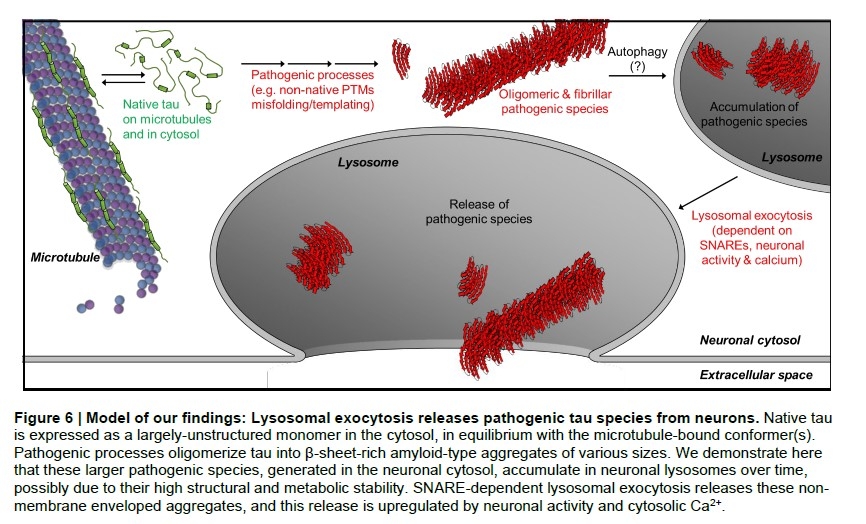You are here
Lysosomal Exocytosis as a Route for Clearance of Degradation-Resistant Materials in Neurons
Speakers
Abstract
Two studies will be discussed: 1) Considerable evidence supports the release of pathogenic aggregates of the neuronal protein tau into the extracellular space. While this release is proposed to instigate the neuron-to-neuron transmission and spread of tau pathology in tauopathies including Alzheimer’s disease, the molecular-cellular mechanism(s) remain unclear. We have found that neuronally generated pathogenic species of tau accumulate within neuronal lysosomes in mouse brains and primary neurons. We then find that neurons release these pathogenic tau species via SNARE-dependent lysosomal exocytosis. Additionally, we find that this release is dependent on neuronal activity and cytosolic Ca2+. These results propose lysosomal exocytosis as a central mechanism for the release of aggregated and degradation-resistant proteins from neurons. 2) In a separate study we have found that if lysosomal exocytosis is reduced by pathogenic mutations in the SNARE-chaperone protein cysteine string protein-α (CSPα), lysosomes accumulate in neurons resulting in a lysosomal storage disorder – adult-onset neuronal ceroid lipofuscinosis (ANCL). From a screen of FDA-approved neuroactive drugs, we have identified immunomodulatory imide drugs (IMiDs), Thalidomide, Lenalidomide, and Pomalidomide, which are now being tested for enhancing lysosomal exocytosis, and thus relieving the lysosomal storage defect in ANCL.

